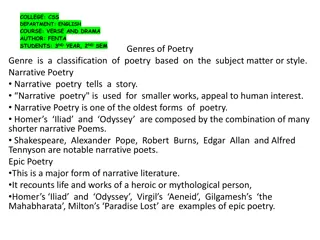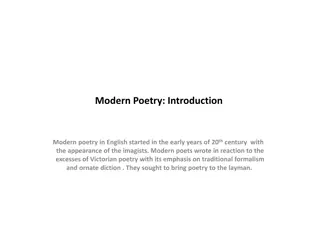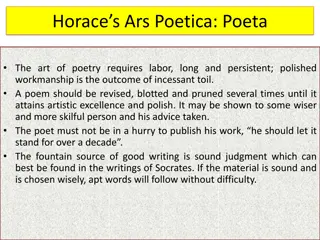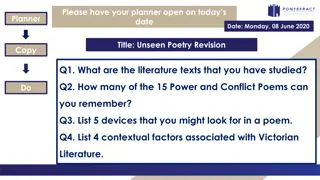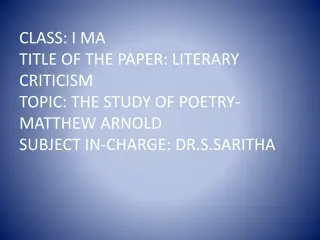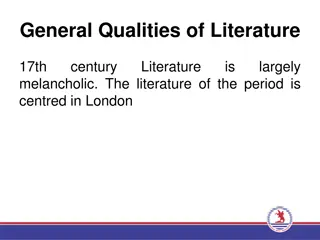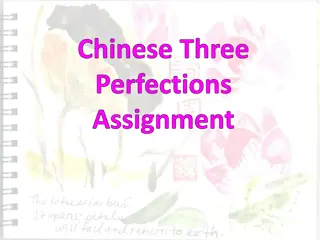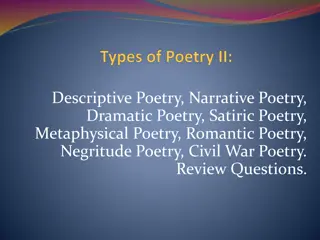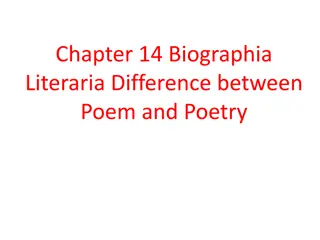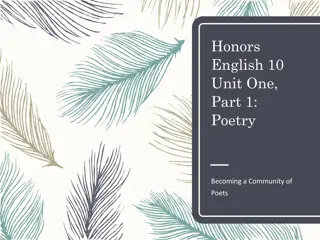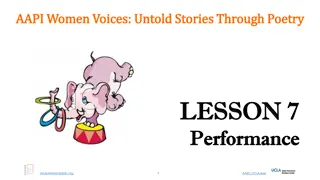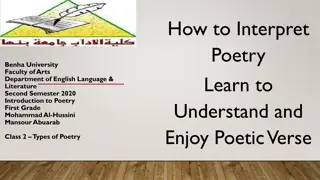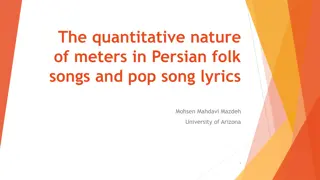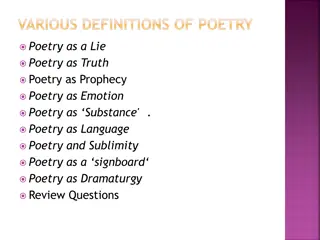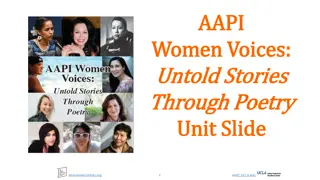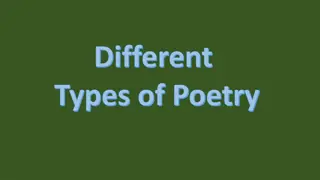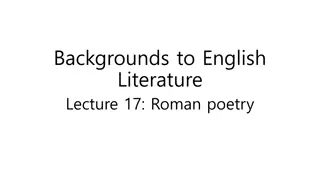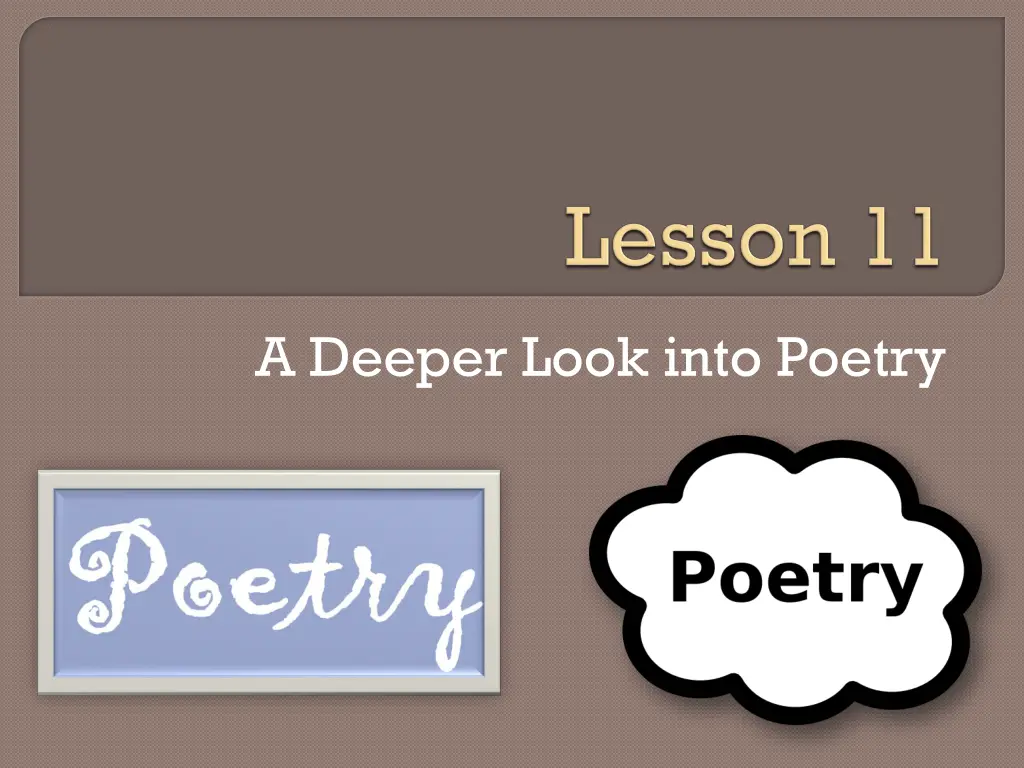
Unveiling the Art of Poetry: Exploring Different Poetic Techniques
Delve into the world of poetry with an exploration of various poetic forms and literary devices such as metaphors, similes, metonymy, personification, and more. Understand the nuances of lyric, narrative, and descriptive poetry to enhance your appreciation and understanding of this expressive art form.
Download Presentation

Please find below an Image/Link to download the presentation.
The content on the website is provided AS IS for your information and personal use only. It may not be sold, licensed, or shared on other websites without obtaining consent from the author. If you encounter any issues during the download, it is possible that the publisher has removed the file from their server.
You are allowed to download the files provided on this website for personal or commercial use, subject to the condition that they are used lawfully. All files are the property of their respective owners.
The content on the website is provided AS IS for your information and personal use only. It may not be sold, licensed, or shared on other websites without obtaining consent from the author.
E N D
Presentation Transcript
Lyric Poetry When a writer creates a lyric poem he/she uses one speaker to express feelings and thoughts. It is a reflective and personal kind of poetry. Narrative Poetry A narrative poem is much like a book; it tells the readers a story. Descriptive Poetry When a writer creates a descriptive poem he/she describes the world around the subject or the speaker with the use of adjectives and imagery.
Metaphor when a writer uses metaphor he/she is comparing two objects without the use of the words as or like . Comparing one thing with another different thing. Example: Her home was a Prison. meaning that the home is in a way like a prison where she is trapped or confined in. Simile is the counterpart of metaphor. When the writer uses simile he/she is comparing two or more objects with the use of the words like or as . Example: They fought like cats and dogs. Meaning when the two person involved fight they fight like they were born to hate each other.
Metonymy when the writer uses metonymy he/she substitutes the name of the main subject with another name that is closely related to it. Example: Let me give you a hand. Meaning the person wants to help the other person. Synecdoche when a writer uses synecdoche he/she is describing a part for the whole. The writer describes the main object with its subparts. Example: Great wheels man. Meaning the person has or owns a great car.
Personification when a writer uses personification he/she gives human characteristics to non human subjects. Example: My life came screeching to a halt. Meaning the person experienced something that made him/her fear for his/her life. Litotes when a writer uses litotes he/she uses a positive subject but means the opposite of it or the negative counterpart of it. He/she employs the use of an understatement. Example: She is not as young as she used to be. Meaning the person feels old or is really old. Irony when a writer uses irony he/she is proving a point but means the exact opposite of it. There is a difference between how the poem or statement looks in general from what it wants to convey or mean. Example: I m so happy that I have to work even on weekends. This is an ironic statement because who would really want to work on weekends?

